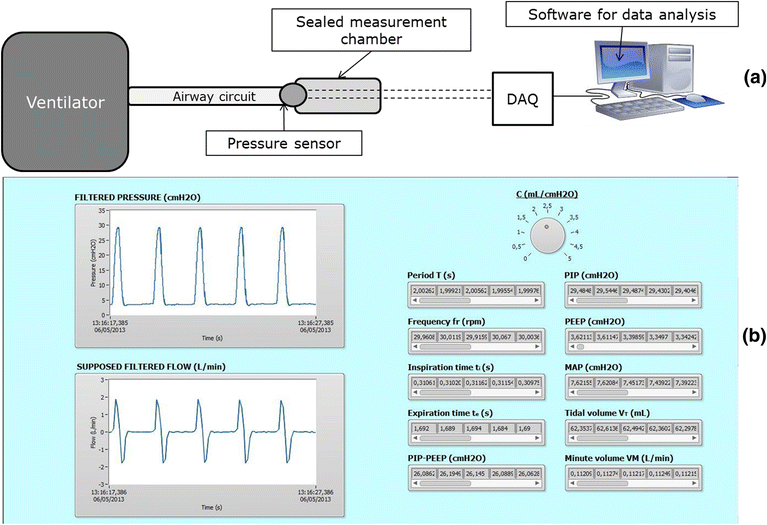Comparative performances analysis of neonatal ventilators
- PMID: 25887436
- PMCID: PMC4348404
- DOI: 10.1186/s13052-015-0112-z
Comparative performances analysis of neonatal ventilators
Abstract
Background: Mechanical ventilation is a therapeutic action for newborns with respiratory diseases but may have side effects. Correct equipment knowledge and training may limit human errors. We aimed to test different neonatal mechanical ventilators' performances by an acquisition module (a commercial pressure sensor plus an isolated chamber and a dedicated software).
Methods: The differences (ΔP) between peak pressure values and end-expiration pressure were investigated for each ventilator. We focused on discrepancies among measured and imposed pressure data. A statistical analysis was performed.
Results: We investigated the measured/imposed ΔP relation. The ΔP do not reveal univocal trends related to ventilation setting parameters and the data distributions were non-Gaussian.
Conclusions: Measured ΔP represent a significant parameter in newborns' ventilation, due to the typical small volumes. The investigated ventilators showed different tendencies. Therefore, a deep specific knowledge of the intensive care devices is mandatory for caregivers to correctly exploit their operating principles.
Figures


References
-
- Moretti C, Papoff P. Lung development and pulmonary malformations. In: Buonocore G, Bracci R, Weindling M. Neonatology – a practical approach to neonatal management. 1st ed. Springer-Verlag. 2012.
-
- Martin RJ, Fanaroff AA, Walsh MC. Fanaroff and Martin’s Neonatal-Perinatal Medicine: Diseases of the Fetus and Infant-Expert Consult. 9th edn. Mosby.
-
- McGaghie WC, Siddall VJ, Mazmanian PE, Myers J. Lessons for Continuing Medical Education From Simulation Research in Undergraduate and Graduate Medical Education Effectiveness of Continuing Medical Education: American College of Chest Physicians Evidence-Based Educational Guidelines. Chest. 2009;135(3):62S–8. doi: 10.1378/chest.08-2521. - DOI - PubMed
Publication types
MeSH terms
LinkOut - more resources
Full Text Sources
Other Literature Sources

